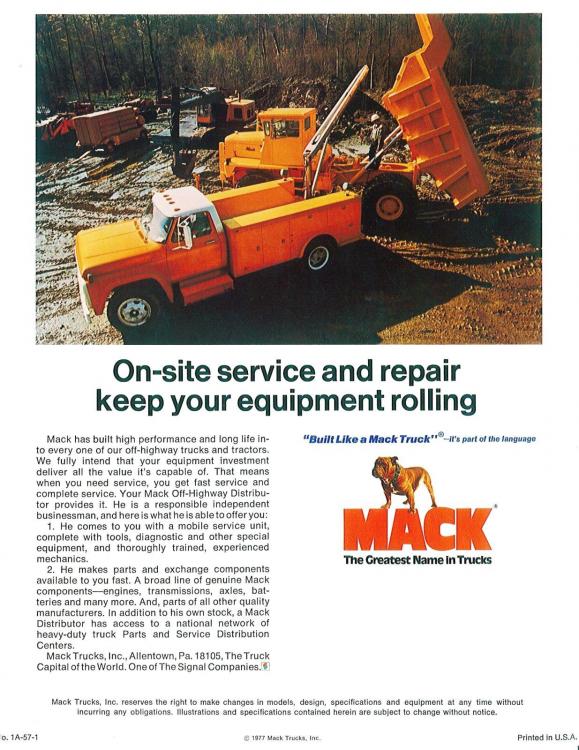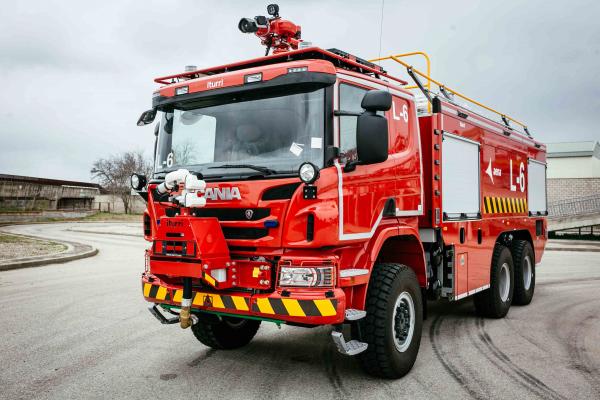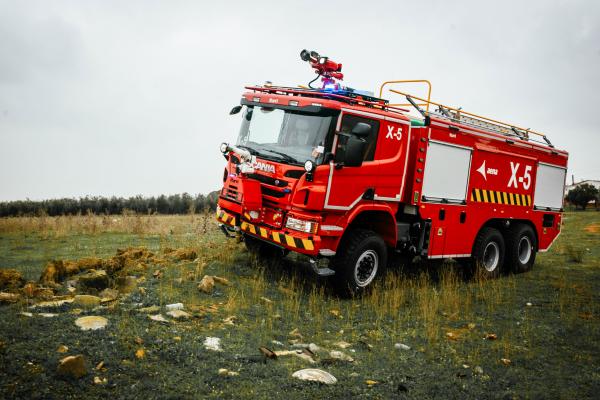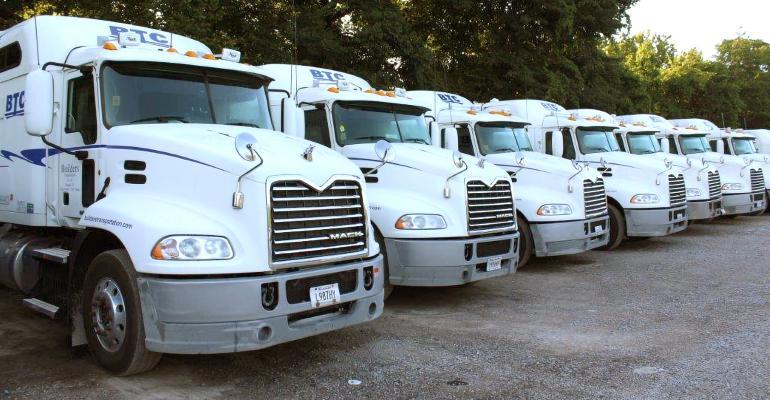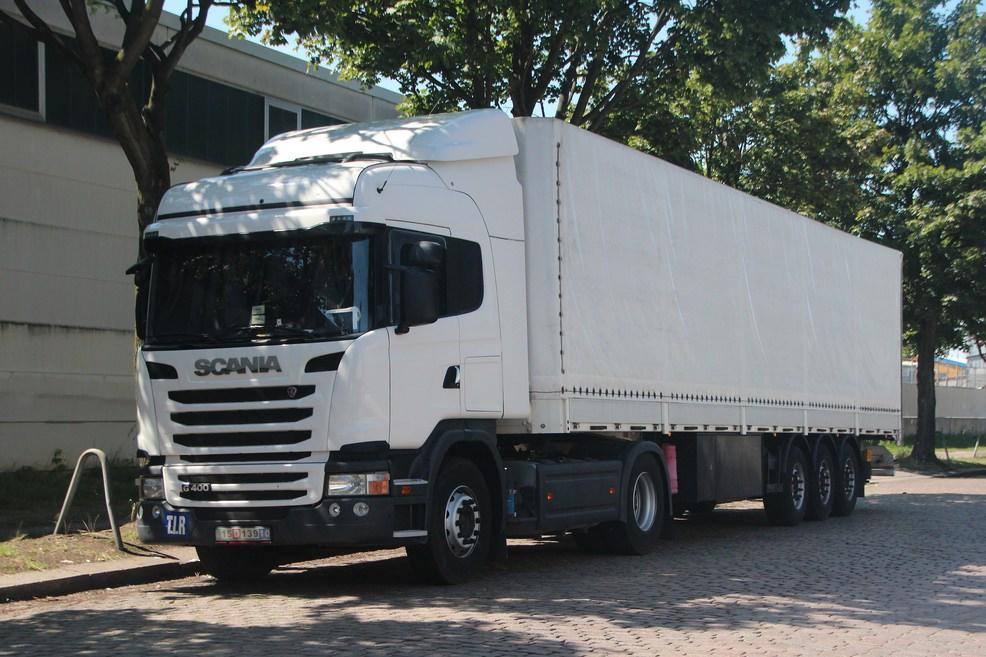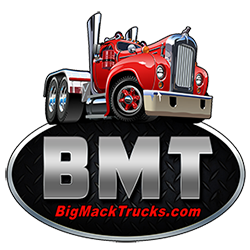
kscarbel2
Moderator-
Posts
18,868 -
Joined
-
Days Won
114
Content Type
Profiles
Forums
Gallery
Events
Blogs
BMT Wiki
Collections
Store
Everything posted by kscarbel2
-
Ford unveils new Transit skeletal chassis cab
kscarbel2 replied to kscarbel2's topic in Trucking News
-
I always liked the Brockway instrument panel in our R/U/DM cab more than our own, as it offered a larger surface area, more flexibility.
-
Ford F-150 Supercrew investigated after complaints of fires linked to seat belts Reuters / August 7, 2018 The nation's top traffic safety regulator is investigating complaints of fire during crashes in some Ford Motor Co. F-150 Supercrew pickups that have been linked to a seat belt component. NHTSA said there were five complaints alleging fires following the activation of seat-belt pretensioners made by ZF TRW or Takata Corp. during a crash involving the vehicles. Pretensioners tighten up any slack in the seat belt webbing in the event of a crash and work in tandem with air bags. While there were no injuries or fatalities, three of the vehicles were completely destroyed by the fire, NHTSA said. An estimated 1.4 million vehicles made between 2015 and 2018 could be affected in the investigation, the agency said.
-
Ford offers dealers $1,000 bonuses to fix recalled Rangers Michael Martinez, Automotive News / August 7, 2018 Ford Motor Co. is offering its U.S. dealers $1,000 for every 2006 Ranger covered by a “do not drive” warning that they find and fix, a company spokeswoman said Tuesday. The affected vehicles were built with potentially defective Takata Corp. airbag inflators. Ford in February expanded the "do not drive" warning to include 36,330 of the pickups, although the number was later revised to 33,320. Ford spokeswoman Elizabeth Weigandt said the automaker has accounted for or repaired about 75 percent of the recalled Rangers and decided to take "additional, unprecedented measures" by offering dealers incentives to find the remaining trucks. Ford told retailers they can earn $1,000 for each Ranger they locate and repair. "We want to get to these vehicles as quickly as we can," she told Automotive News. "We just don’t want our customers driving these vehicles at all." The affected Rangers were built from August through December 2005 at Ford's now-shuttered Twin Cities Assembly Plant in St. Paul, Minn. The defective inflators can explode with excessive force, unleashing metal shrapnel inside vehicles. The problem led to the largest automotive recall in history and forced Takata to file for bankruptcy protection in June 2017.
-
OEM R model turbo boost gauge?
kscarbel2 replied to seyser's topic in Antique and Classic Mack Trucks General Discussion
Did you ask Watt's Mack about availability? (1-888-304-6225) -
Saudis threaten Canada with 9/11-style attack https://www.rt.com/news/435237-saudi-threaten-canada-terrorism/
-
The Dubai Road Express | Legends of Long Haulage
kscarbel2 replied to kscarbel2's topic in Trucking News
-
Air Products took delivery of 6V92-powered R-models (R626STs) in the 1980s via the Allentown Branch. You had to wonder............
-
Ford unveils new Transit skeletal chassis cab
kscarbel2 replied to kscarbel2's topic in Trucking News
I hear you, but I feel Ford is behind the curve. Look at Ranger. Why did they ever discontinue US sales? Why didn't Ford immediately replace the outgoing model with the new 2012 global market T6 Ranger? What a no-brainer. Why did they walk away from Bronco, a signature Ford product unlike anything the competition sells. Why are 3.0 diesel-powered F-150 XL and XLT pickups only sold to fleet customer number holders.....individuals are not permitted to buy one? (Why send a customer away with money in hand?) Why did Ford get out of heavy trucks after spending US$500 million? Why did Ford waste everyone's time introducing the LCF with a cramped Mazda cab the US market would never accept, and that Navistar 4.5 litre V6 full of teething problems. The idea of a US market Ford low cab forward was perfect, but the execution was shockingly poor. Incompetence rears its ugly head again and again at Ford US (meanwhile at Bill Ford-backed Ford-Otosan, they are methodically getting Ford back on the global stage in a way not scene since Ford US hands destroyed the development of the Transcontinental!) Saw a new Avon F-650 U-Haul today. But knowing U-Haul, I'll bet money that Ford makes minimal profit from those sales. They're giving them away for the visibility. It used to take us 5 years to create an all-new Mack. Today, it probably takes Ford 3 years to design an all-new F-Series. Any which way, when a new F-Series launches, they are already at work on the next.....they're always in the pipeline. -
The Guardian / August 5, 2018 Hamza bin Laden, the son of the late al-Qaida leader, has married the daughter of Mohammed Atta, the lead hijacker in the 9/11 terror attacks. Osama bin Laden’s half-brothers, Ahmad and Hassan al-Attas, said they believed Hamza had taken a senior position within al-Qaida and was aiming to avenge the death of his father, shot dead during a US military raid in Pakistan seven years ago. Hamza bin Laden is the son of one of Osama bin Laden’s three surviving wives, Khairiah Sabar, who was living with her husband in a compound in Abbottabad, near a large Pakistani military base, when he was killed. He has since made public statements urging followers to wage war on Washington, London, Paris and Tel Aviv and is seen as a deputy to the terrorist group’s current leader, Ayman al-Zawahiri. “We have heard he has married the daughter of Mohammed Atta,” said Ahmad al-Attas. “We’re not sure where he is, but it could be Afghanistan.” Western intelligence agencies have been increasingly focusing on the whereabouts of Hamza bin Laden over the past two years, seeing him as more likely than anyone else to galvanise followers. His marriage to the daughter of Atta, an Egyptian national, appears to confirm that the 9/11 alumni remains a central hub of al-Qaida and that the organisation itself continues to be organised around Osama bin Laden’s legacy. Another of Bin Laden’s sons, Khalid, was killed in the US raid in Abbottabad. A third, Saad, was killed in a drone strike in Afghanistan in 2009. Letters purportedly written by Osama bin Laden and seized from the compound suggested he was grooming Hamza to replace him, partly to avenge the death of Saad. Bin Laden’s wives and surviving children have returned to Saudi Arabia, where they were given refuge by the former crown prince Mohammed bin Nayef. The women and children remain in close contact with Bin Laden’s mother, Alia Ghanem, who told the Guardian in an interview that she remained in regular touch with surviving family members. “When we thought everyone was over this, next thing I knew was Hamza saying I am going to avenge my father,” said Hassan al-Attas. “I don’t want to go through that again. “If Hamza was in front of me now, I would tell him: God guide you. Think twice about what you are doing. Don’t retake the steps of your father. You are entering really negative and horrible parts of your soul.” The family claimed they did not have any contact with Osama bin Laden from 1999 until his death in 2011. They said they had not heard from Hamza bin Laden. In recognition of his apparent status within al-Qaida, the US government labelled him a specially designated global terrorist in January 2017, meaning his assets could be blocked and anyone who dealt with him faced arrest.
-
Ford unveils new Transit skeletal chassis cab
kscarbel2 replied to kscarbel2's topic in Trucking News
I hear you. There are many questionable drivers with CDLs (though I'm not an advocate for autonomous trucks). All I'm saying, is with a CDL, the driver has undergone some formal training, whereas the non-CDL driver has not. Of course it depends where you are, but I observe that GM lost massive market share when it walked away from commercial. Yes, they still offered a 3500HD cab & chassis, but fleets ignored that thin offering. I believe Dodge grabbed most of GM's market share.....everywhere I look is a new 4500 and 5500. And I believe Dodge has been incrementally grabbing Ford market share.....still a lot of fleets that never regained their confidence in Ford after the never-ending diesel issues, and then Ecoboost nightmares. They looked at Dodge, with the Cummins, as a known entity, a safe bet. Dodge has witnessed premature DEF pump failures on the 3.0L Ecodiesel (Italian VM Motori) engines (a US market emissions design/sourcing issue), but the ISB-powered HDs appear to be winning more and more market share from Ford defectors. The new hood-tilting 2019 Chevrolet (why not GMC?) Silverado HD finally offers the engine access we always knew was possible but the US automakers didn't want to create (to keep architecture standardized with the smaller pickups). But away from the commercial market for what seems like an eternity, with dealers who don't have experienced "commercial" people, GM has an uphill battle ahead of it. Most fleets simply aren't going to jump back on board the GM train....they're going to need some convincing in the form of generous incentives. The Isuzu Duramax V8/Allison combination certainly works satisfactorily, though a straight 6 (e.g. Cummins ISB) would/does deliver better fuel economy. Frankly, if I was GM, I would use the superb 5.2-litre 215 horsepower (520 lb.-ft.) Isuzu 4HK1-TC in the 3500HD thru 6500HD range instead of the Duramax V8 for class-leading fuel economy to spur sales, or at least offer it as the base engine. Why ignore the opportunity to brag as having the most fuel efficient offering? -
From the workers point of view and my own, a straight run is/was more convenient. But sometimes production planning has orders contrary to logic.
-
http://www.dailymail.co.uk/news/article-6025457/Australian-discovery-World-War-Two-SOLVE-mystery-missing-pilot-Amelia-Earhart.html
-
Probably Jim. All the U-700s I supported had NH power. Holly Farms taught me with their 903-powered K100s (on "the shore" in Temperanceville, VA) that the 903 didn't make for a good truck engine. They finally replaced them with beautiful new Ford HN80s.
-
All the Macks I knew with Cherryville (northwest of Gastonia), North Carolina-based Carolina Freight were Mack-powered. They bought some of everything, and ran many White 4000s (local) and 7000s (over-the-road). Winston Salem, North Carolina-based McLean Trucking also ran many makes, including Whites. There was so much trucking going on in North Carolina at one time, we had a factory branch in WInston Salem, in addition to Charlotte, to support the massive fleets up there. We sold the Winston-Salem branch to Jim Bland and Triad Mack was born.
-
Bob, the cabs on the Cummins-powered U-700s were indeed mounted higher for clearance and a larger radiator. When I recall the U-700, I instinctively think of Columbia, South Carolina-based Southeastern Freight Lines. They had NHs, not 903s. .
-
Ford unveils new Transit skeletal chassis cab
kscarbel2 replied to kscarbel2's topic in Trucking News
I think you'll find that what works in Europe, the global market, can work here. Towing needs to be regulated. A CDL-less 16-year-old kid barreling down a crowded 45mph road doing 55mph in an (insufficiently tow rated) E-250 or F-250 pulling a cheap and overloaded tandem-axle trailer overloaded with a skid loader, breaker and numerous other items that he failed to secure properly (aka. projectiles) is all too common place. These accidents-waiting-to-happen are seen daily coast-to-coast. Such towing should be limited to private property (at your own risk), and banned from public roads. In the 550 range, I'd like to see a (Cargo) low-cab-forward. With that you get the needed weight distribution, with the added benefit of enhanced visibility. -
Scania Group Press Release / August 3, 2018 Spanish airports giant adds 14 new firefighting trucks to its emergency fleet. AENA, the Spanish airports authority, has made a significant reinforcement to its firefighting and emergency capabilities with the addition of 14 Scania P 490 6×6 fire trucks. Each of the vehicles is equipped with a 13-litre Scania engine, and nine of the trucks have superstructures built by Iturri, while five have been built by Rosenbauer. Ideally equipped for all airport emergencies According to Eurostat, Spain had the third-largest volume of airport traffic in 2017 (after the UK and Germany), with almost 250 million passengers. And for AENA, which counts 46 airports and two heliports in its national network, the Scania P 490 6×6 is ideally equipped for fighting fires and dealing with other airport emergencies safely and quickly. The new firefighting truck measures up to the stringent specifications that are required by the International Civil Aviation Organisation (ICAO). Crucially, the vehicle has rapid speed of response. When fully loaded it can accelerate from 0 to 80 km per hour in less than 35 seconds, and it has a maximum speed of 100 km per hour. The firefighting capability is also impressive. It includes a 6,100-litre water tank, a foam tank with a storage capacity of 750 litres and a chemical dust deposit of 225 kilos. The truck also has a water cannon mounted on the ceiling of the cabin that can provide a variable jet for spraying water and foam, at a distance of more than 65 metres. A secondary front cannon under the windscreen has a range of 40 metres. .
-
Eaton’s new Endurant transmission - Don’t call it an AMT
kscarbel2 replied to kscarbel2's topic in Trucking News
Cummins, Eaton joint venture expected to profit in 2020 Truck News / August 3, 2018 COLUMBUS, Indiana – A Cummins and Eaton joint venture that was developed in 2017 is expected to be profitable by 2020, Cummins president and chief operating officer Richard Freeland said when releasing financial results for the second quarter of 2018. Current losses for Eaton Cummins Automated Transmission Technologies are expected to be halved in 2019, with a break-even point to be reached the following year. “The combined powertrain product is doing terrific as we introduced the new product, and more importantly, as we’ve done the integration work between the engine and the transmission,” he said. The first product to emerge through the joint venture was the 12-speed automated Endurant transmission. It isn’t the only partnership playing a role in future business plans, either. Cummins, which recently acquired Efficient Drivetrains Inc. as part of its electrification strategy for commercial vehicles, is also forming a joint venture with Chinese JAC Motors following Navistar’s exit from that business. Tom Linebarger, Cummins chairman and chief executive officer, says the company will benefit from JAC’s strong exporter status in overseas markets that follow China 6 emissions standards. Cummins’ market share in the region is expected to grow significantly – perhaps double – in five years, he said. -
Not to be confused with Atlanta-based Builder's Transport, which was acquired by Green bay-based Schneider National in 1998.
-
Fleet Owner / August 3, 2018 Flatbed and specialized transportation provider Daseke, Inc. has acquired Memphis-based metal hauler Builders Transportation Co. The purchase adds Builders' fleet of more than 300 trucks and nearly 500 spread-axle trailers to Daseke, which already is the largest company of its kind in North America with a combined fleet of over 5,200 trucks and 11,000 flatbed and specialized trailers. Builders' traditional flatbed operations through the 48 contiguous states are focused in the eastern two-thirds of the U.S. hauling coil steel, wire products, structural and sheet steel, aluminum products, building materials, cast iron, steel pipe, and machinery. "We've had Builders Transportation on our radar for quite some time. We've been impressed with the focus and family-rooted culture of the company," said Don Daseke, CEO of Daseke. "The company has been in business since 1954 and it has a long legacy as a family-run operation. They will be a great addition to the Daseke family." For the 12-month period ending in June 2018, Builders had an estimated $72.4 million in gross revenue and $9.7 million in adjusted EBITDA. Under the terms of the purchase agreement, Daseke acquired Builders for a total consideration of $53.8 million including $3.4 million in Daseke stock. Builders has won "Carrier of the Year" awards from several of its core customers, the company noted. It has been family owned and operated since Frank Phillips Sr. purchased the six-truck operation back in 1961, and along with his sons has steadily grown the business to where it is today. "Over the years, we've had companies approach us but we never took any of that seriously—we didn't want to give up what our family has built,” said Builders CEO John Phillips. "We have a long history and are very protective of our heritage. We have people here who have been with us their entire career. Being with Daseke lets us continue being who we are, and that's critically important to us." Investment analysis and equity research firm Cowen issued a brief today on the Builders acquisition stating it believes there will be "moderate synergies from the deal" with Daseke seeing moderate per-share earnings growth next year. "We view the acquisition as part of [Daseke's] ongoing plan to roll up the heavyweight and transport sectors," Cowen stated in the brief. .
-
Scania says U.S. sanctions put entire Iran truck sales in 'jeopardy'
kscarbel2 replied to kscarbel2's topic in Trucking News
"When I ran Mack International, we averaged sales of 4,000 to 4,500 trucks per year in 1975-79 in Iran (7,000 units in 1975)," Curcio said. "At that time, Iran Drilling was one of our customers. I'm sure they've missed the strength, longevity and reliability of a Mack. We still have between 35,000 and 55,000 Mack trucks operating in Iran." Mack Trucks Chairman John B. Curcio -
Reuters / August 3, 2018 Scania’s entire sales into Iran could be lost if the United States reinstates sanctions against the country, the Swedish truckmaker’s head warned on Friday, a day after first-half results showed the company’s Iranian order book was already being hit. CEO Henrik Henriksson said Scania, which was one of the first truck companies to return to Iran after the EU lifted sanctions in early 2016, had cancelled all orders that it could not deliver by mid August as anything after would have been hit by the new sanctions. “Looking at the information we have on hand today, of course if nothing is improving, then (our) whole volume will be in jeopardy,” told Reuters. Among truckmakers, Scania, has one of the larger presences in Iran, selling 5,000-6,000 trucks and buses annually, according to Henriksson. That represents about 5 percent of its global vehicle orders of 109,415 last year. Such a move would be another blow to the Iranian car industry, which unlike the energy and banking sectors, had managed to sign contracts with top European firms after the lifting of sanctions in 2016, attracting sizable foreign investment. French carmaker PSA Group began to suspend its joint venture activities in Iran in June and Germany’s Daimler said it was closely monitoring any further developments and would then evaluate the potential impact on its business. Despite the efforts of European governments to salvage the nuclear deal and provide guarantees to European firms to protect them against secondary U.S. sanctions, many of them are leaving Iran anyway to avoid any possible U.S. penalties. America accounted for 13 percent of Scania’s orders for trucks, buses and coaches in 2017. Scania declined to comment on how much of an impact the decline in orders from Iran, considered as one of their growth markets, had on first half results. The company’s factories in Latin America and Europe are used to produce vehicles for Tehran and it distributes trucks and buses through local partners, which also own Scania’s production and extensive servicing network in Iran. Henriksson said Scania was also pressing for faster payment as sanctions could potentially close financing networks by November. “As it is right now, it’s a wind down window of getting orders out that were in before a certain date and getting payments in as much as you can,” he said. However, Henriksson said Scania was working on a contingency plan so that it could continue to deliver spare parts needed to keep its trucks and buses on Iranian roads running, but that nothing was resolved yet. .
-
Billy, the sum of kickbacks from truckmakers into the pockets of trucking company executives over the years runs into the billions of dollars, and Roadway was no exception.
-
Ford unveils new Transit skeletal chassis cab
kscarbel2 replied to kscarbel2's topic in Trucking News
The dropside bed is functional/versatile. Our archaic fixed shape pickup beds offer no such flexibility. The crew cab Transit dropside pickup is so much more efficient in form and function than a typical US conventional cab pickup. Weight distribution is far better. No fuel guzzling engine. More maneuverable. A spacious cab designed for work. Unparalleled visibility. The list goes on and on.
BigMackTrucks.com
BigMackTrucks.com is a support forum for antique, classic and modern Mack Trucks! The forum is owned and maintained by Watt's Truck Center, Inc. an independent, full service Mack dealer. The forums are not affiliated with Mack Trucks, Inc.
Our Vendors and Advertisers
Thank you for your support!


